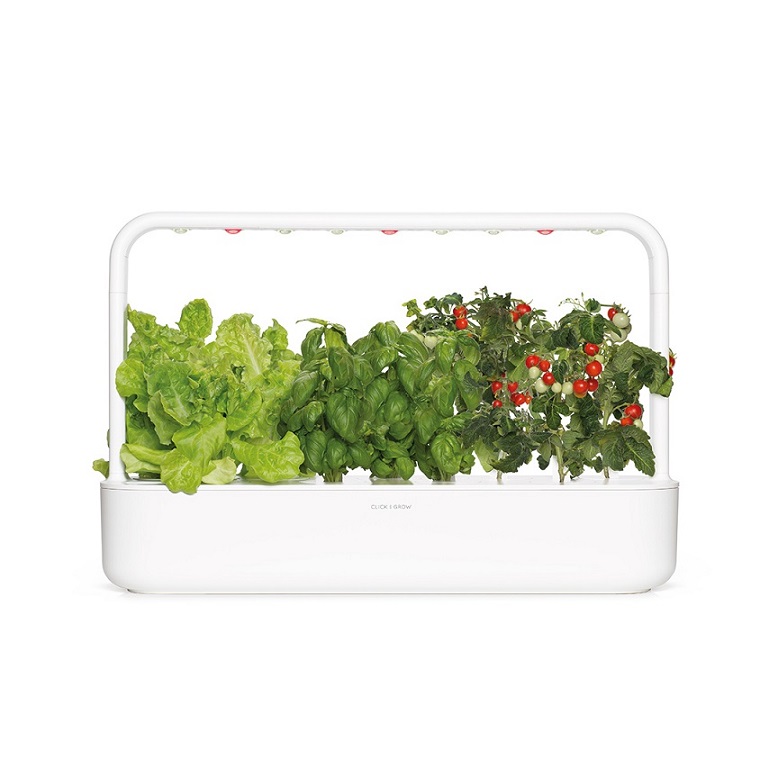
Furfuryl alcohol

| |

| |
| Names | |
|---|---|
| Preferred IUPAC name
(Furan-2-yl)methanol | |
| Other names
Furan-2-ylmethanol
Furfuryl alcohol 2-Furanmethanol 2-Furancarbinol 2-(Hydroxymethyl)furan | |
| Identifiers | |
3D model (JSmol)
|
|
| ChEBI | |
| ChEMBL | |
| ChemSpider | |
| ECHA InfoCard | 100.002.388 |
PubChem CID
|
|
| UNII | |
CompTox Dashboard (EPA)
|
|
| |
| |
| Properties | |
| C5H6O2 | |
| Molar mass | 98.10 g/mol |
| Appearance | colorless liquid |
| Odor | burning odor[2] |
| Density | 1.128 g/cm3 |
| Melting point | −29 °C (−20 °F; 244 K) |
| Boiling point | 170 °C (338 °F; 443 K) |
| miscible | |
| Hazards | |
| NFPA 704 (fire diamond) | |
| Flash point | 65 °C; 149 °F; 338 K[2] |
| Explosive limits | 1.8% - 16.3%[2] |
| Lethal dose or concentration (LD, LC): | |
LC50 (median concentration)
|
397 ppm (mouse, 6 hr) 85 ppm (rat, 6 hr) 592 ppm (rat, 1 hr)[3] |
LCLo (lowest published)
|
597 ppm (mouse, 6 hr)[3] |
| NIOSH (US health exposure limits): | |
PEL (Permissible)
|
TWA 50 ppm (200 mg/m3)[2] |
REL (Recommended)
|
TWA 10 ppm (40 mg/m3) ST 15 ppm (60 mg/m3) [skin][2] |
IDLH (Immediate danger)
|
75 ppm[2] |
| Safety data sheet (SDS) | External MSDS |
Except where otherwise noted, data are given for materials in their standard state (at 25 °C [77 °F], 100 kPa).
| |
Furfuryl alcohol is an organic compound containing a furan substituted with a hydroxymethyl group. It is a colorless liquid, but aged samples appear amber. It possesses a faint odor of burning and a bitter taste. It is miscible with but unstable in water. It is soluble in common organic solvents.[4]

Synthesis
Furfuryl alcohol is manufactured industrially by hydrogenation of furfural, which is itself typically produced from waste bio-mass such as corncobs or sugar cane bagasse. As such furfuryl alcohol may be considered a green chemical.[5] One-pot systems have been investigated to produce furfuryl alcohol directly from xylose using solid acid catalysts.[6]

Reactions
It undergoes many reactions including Diels–Alder additions to electrophilic alkenes and alkynes. Hydroxymethylation gives 1,5-bis(hydroxymethyl)furan. Hydrolysis gives levulinic acid. Upon treatment with acids, heat and/or catalysts, furfuryl alcohol can be made to polymerize into a resin, poly(furfuryl alcohol). Hydrogenation of furfuryl alcohol can proceed to give hydroxymethyl derivative of tetrahydrofuran and 1,5-pentanediol. The etherification reaction of furfuryl alcohol with alkyl or aryl halide (e.g. benzyl chloride) in the liquid-liquid-liquid triphase system with the help of a phase transfer catalyst also reported.[7] In the Achmatowicz reaction, also known as the Achmatowicz rearrangement, furfuryl alcohol is converted to a dihydropyran.

Applications
Resins, composites
The primary use of furfuryl alcohol is as a monomer for the synthesis of furan resins.[4][8] These polymers are used in thermoset polymer matrix composites, cements, adhesives, coatings and casting/foundry resins. Polymerization involves an acid-catalyzed polycondensation, usually giving a black cross-linked product.[9] A highly simplified representation is shown below.


Because of its low molecular weight, furfuryl alcohol can impregnate the cells of wood, where it can be polymerized and bonded with the wood by heat, radiation, and/or catalysts or additional reactants. The treated wood (e.g. "Kebony") has improved moisture-dimensional stability, hardness, and decay and insect resistance; catalysts can include zinc chloride, citric, and formic acid, as well as borates.[10][11]

Rocket fuel
Furfuryl alcohol has been used in rocketry as a fuel which ignites hypergolically (immediately and energetically in contact) with white fuming nitric acid or red fuming nitric acid oxidizer.[12] The use of hypergolics avoids the need for an igniter. Mixtures of furfuryl alcohol and aniline in different proportions were used in American MGM-5 Corporal ballistic missile and WAC Corporal and Aerobee sounding rockets.[13] Mixture of 41% of furfuryl alcohol, 41% of xylidine and 18% of methanol, called Furaline, was used in France for experimental rocket engines for aircraft, developed by SEPR.[13]

In late 2012, Spectra, a concept liquid rocket engine using white fuming nitric acid as the oxidizer to furfuryl alcohol fuel was static tested by Copenhagen Suborbitals.[14][15]

Safety
The median lethal dose for furfuryl alcohol ranges from 160 to 400 mg/kg (mouse or rabbit, oral).[citation needed]

See also
- Furfurylamine – corresponding amine
- 2-Furonitrile – corresponding nitrile
- Furan-2-ylmethanethiol – corresponding thiol
- 2-Furoic acid – corresponding carboxylic acid
References
- ^ Merck Index, 11th Edition, 4215.
- ^ a b c d e f NIOSH Pocket Guide to Chemical Hazards. "#0298". National Institute for Occupational Safety and Health (NIOSH).
- ^ a b "Furfuryl alcohol". Immediately Dangerous to Life or Health Concentrations (IDLH). National Institute for Occupational Safety and Health (NIOSH).
- ^ a b Hoydonckx, H. E.; Van Rhijn, W. M.; Van Rhijn, W.; et al. "Furfural and Derivatives". Ullmann's Encyclopedia of Industrial Chemistry. Weinheim: Wiley-VCH. doi:10.1002/14356007.a12_119.pub2. ISBN 978-3527306732.
- ^ Mariscal, R.; Maireles-Torres, P.; Ojeda, M.; et al. (2016). "Furfural: a Renewable and Versatile Platform Molecule for the Synthesis of Chemicals and Fuels" (PDF). Energy Environ. Sci. 9 (4): 1144–1189. doi:10.1039/C5EE02666K. hdl:10261/184700. ISSN 1754-5692. S2CID 101343477.
- ^ Gómez Millán, Gerardo; Sixta, Herbert (23 September 2020). "Towards the Green Synthesis of Furfuryl Alcohol in a One-Pot System from Xylose: a Review". Catalysts. 10 (10): 1101. doi:10.3390/catal10101101.
- ^ Katole DO, Yadav GD. Process intensification and waste minimization using liquid-liquid-liquid triphase transfer catalysis for the synthesis of 2-((benzyloxy)methyl)furan. Molecular Catalysis 2019;466:112–21. https://doi.org/10.1016/j.mcat.2019.01.004
- ^ Brydson, J. A. (1999). "Furan Resins". In J. A. Brydson (ed.). Plastics Materials (Seventh ed.). Oxford: Butterworth-Heinemann. pp. 810–813. doi:10.1016/B978-075064132-6/50069-3. ISBN 9780750641326.
- ^ Choura, Mekki; Belgacem, Naceur M.; Gandini, Alessandro (January 1996). "Acid-Catalyzed Polycondensation of Furfuryl Alcohol: Mechanisms of Chromophore Formation and Cross-Linking". Macromolecules. 29 (11): 3839–3850. Bibcode:1996MaMol..29.3839C. doi:10.1021/ma951522f.
- ^ Alfred J., Stamm (1977). "Chapter 9". Wood Technology: Chemical Aspects. ACS Symposium Series. Vol. 43. Washington: American Chemical Society. pp. 141–149. doi:10.1021/bk-1977-0043.ch009. ISBN 9780841203730.
- ^ Baysal, Ergun; Ozaki, S.Kiyoka; Yalinkilic, MustafaKemal (21 August 2004). "Dimensional stabilization of wood treated with furfuryl alcohol catalysed by borates". Wood Science and Technology. doi:10.1007/s00226-004-0248-2. S2CID 33699990.
- ^ Munjal, N. L. (May 1970). "Ignition catalysts for furfuryl alcohol - Red fuming nitric acid bipropellant". AIAA Journal. 8 (5): 980–981. Bibcode:1970AIAAJ...8..980M. doi:10.2514/3.5816.
- ^ a b Schmidt, Eckart W. (2022-12-19). "Furfuryl Alcohol as Rocket Fuel". Encyclopedia of Liquid Fuels. De Gruyter. pp. 36–44. doi:10.1515/9783110750287-001. ISBN 978-3-11-075028-7.
- ^ Madsen, Peter. "Spectra-testen" (in Danish). Archived from the original on September 12, 2012. Retrieved September 10, 2012.
- ^ Madsen, Peter. "Project SPECTRA: Experimental evaluation of a liquid storable propellant" (PDF). Copenhagen Suborbitals. Archived from the original (PDF) on 2013-03-17. Retrieved 2013-05-01.
External links
See what we do next...
OR
By submitting your email or phone number, you're giving mschf permission to send you email and/or recurring marketing texts. Data rates may apply. Text stop to cancel, help for help.
Success: You're subscribed now !

